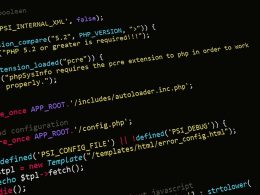1. Use Shortcuts for Speed
In any development environment, using shortcuts is a great way to speed up your workflow. Android Studio is no exception. Using keyboard shortcuts can save you time and effort, especially when performing routine tasks. Learn some of the most common shortcuts, such as Ctrl + Space for code completion, Ctrl + Shift + F for finding text within a project, and Ctrl + Shift + N for quickly navigating to a file or class.
2. Use Templates
Android Studio provides a range of templates that can help you quickly set up your project and create new components. For example, you can use a template to create an activity or a fragment with a predefined layout, saving you time and effort. To access templates in Android Studio, select File > New > Activity or Fragment, and then choose from the available options.
3. Use Libraries
Instead of reinventing the wheel and writing code for every feature from scratch, you can use libraries to speed up your development process. Many libraries are available for Android development, such as Retrofit for network requests and Glide for image loading. Using third-party libraries can help you save time and reduce the amount of code you need to write, ultimately reducing the potential for errors.
4. Use ProGuard
ProGuard is a tool that can help you optimize your app’s performance and reduce the size of your APK file. It works by removing any unused code, optimizing bytecode, and obfuscating your code. Enabling ProGuard can reduce the size of your APK file by up to 50%, resulting in faster downloads and better performance.
5. Use Annotations
Annotations are a great way to provide additional information to the compiler about your code. You can use annotations to generate code, enforce constraints, or provide additional context for your code. For example, you can use the @Nullable or @NonNull annotations to indicate whether a parameter or return value can be null.
6. Use Debugging Tools
Debugging is an essential part of any development process. Android Studio provides several debugging tools that can help you identify and fix issues in your code. For example, you can use the Debugger to step through your code and view the current state of variables. You can also use Logcat to view system messages and debug output.
7. Use Source Control
Source control is a crucial part of any development process, allowing you to track changes and collaborate with others. Android Studio provides integration with popular source control systems like Git and SVN. Using source control can help you keep track of changes, revert to earlier versions of your code, and collaborate with other developers more efficiently.
In Conclusion
Android Studio is a powerful tool for developing high-quality mobile applications for Android devices. However, it can be a challenging task to code efficiently, especially for those new to the platform. By using these best practices, you can speed up your workflow, reduce errors, and ultimately make your coding more efficient.










